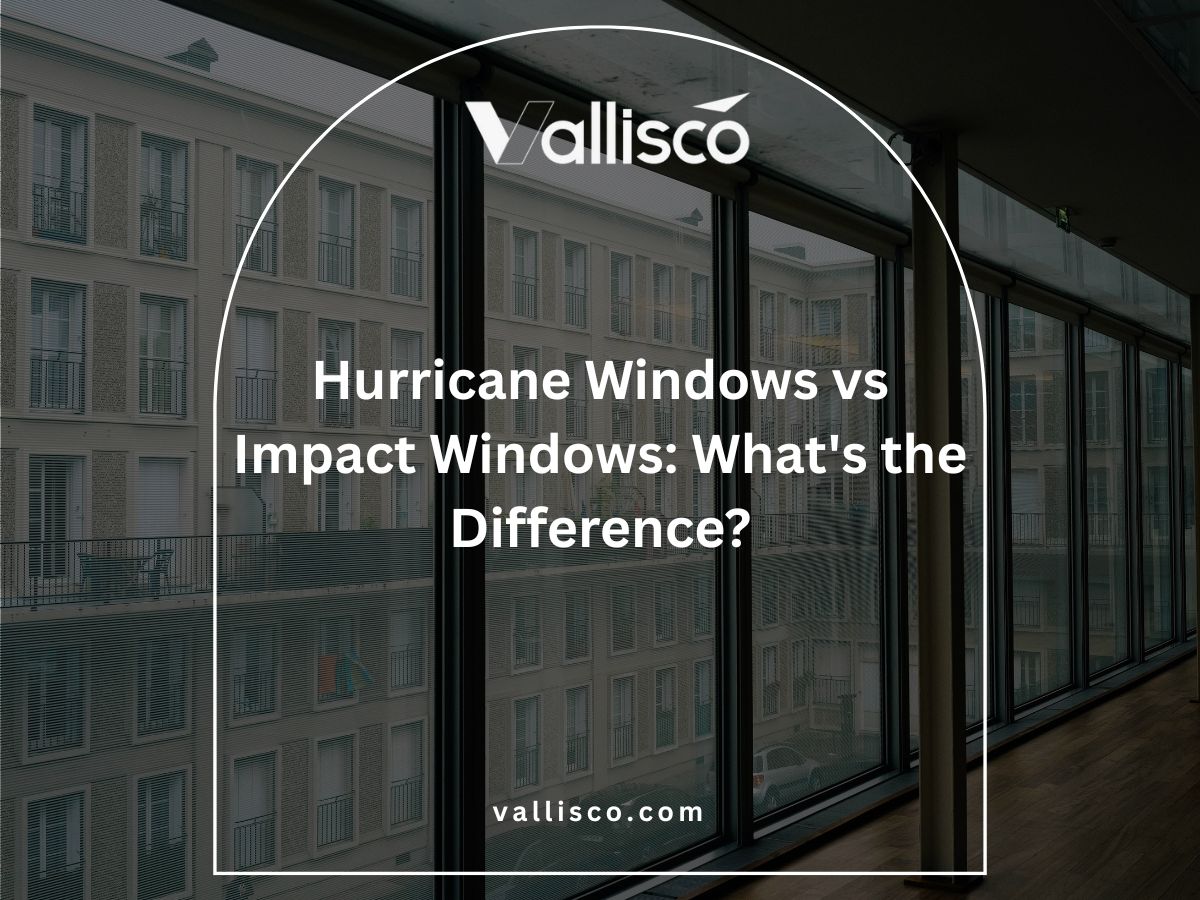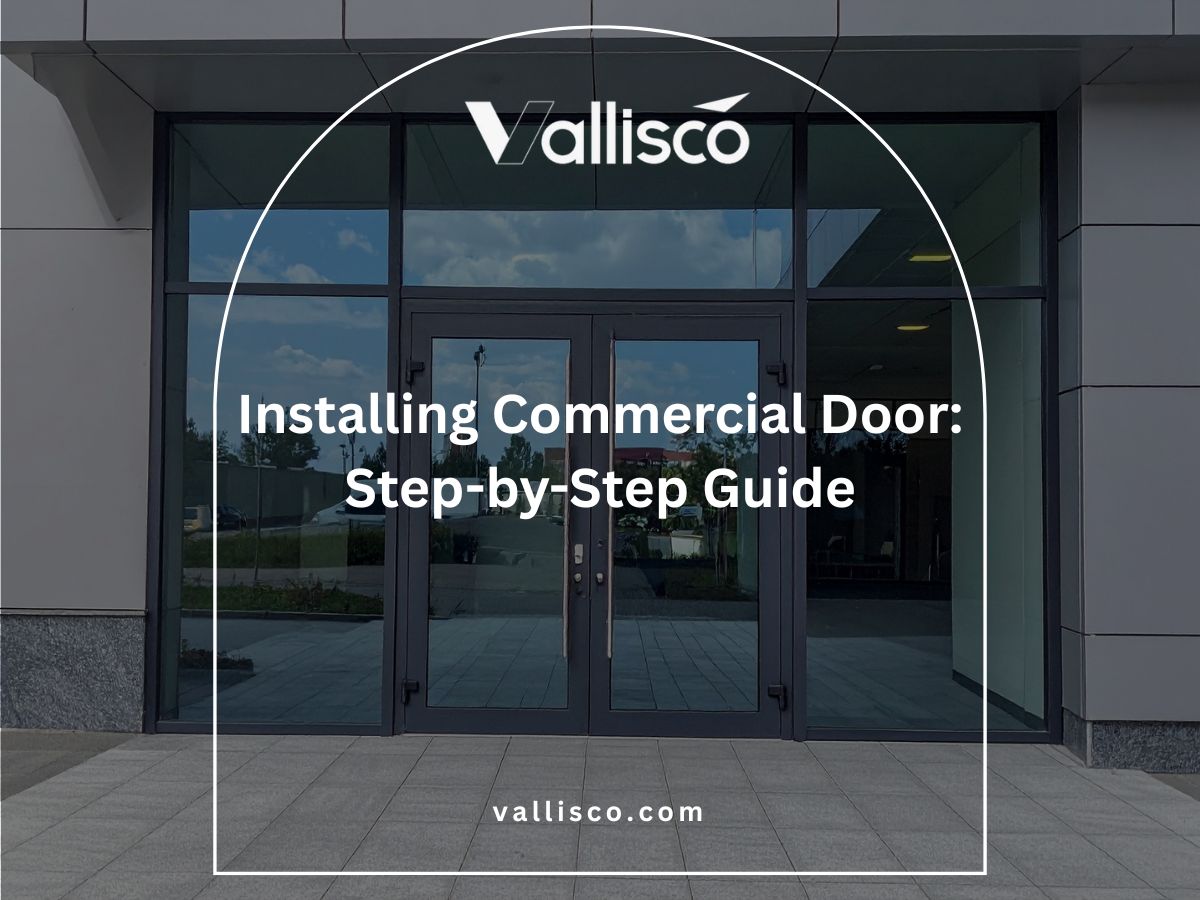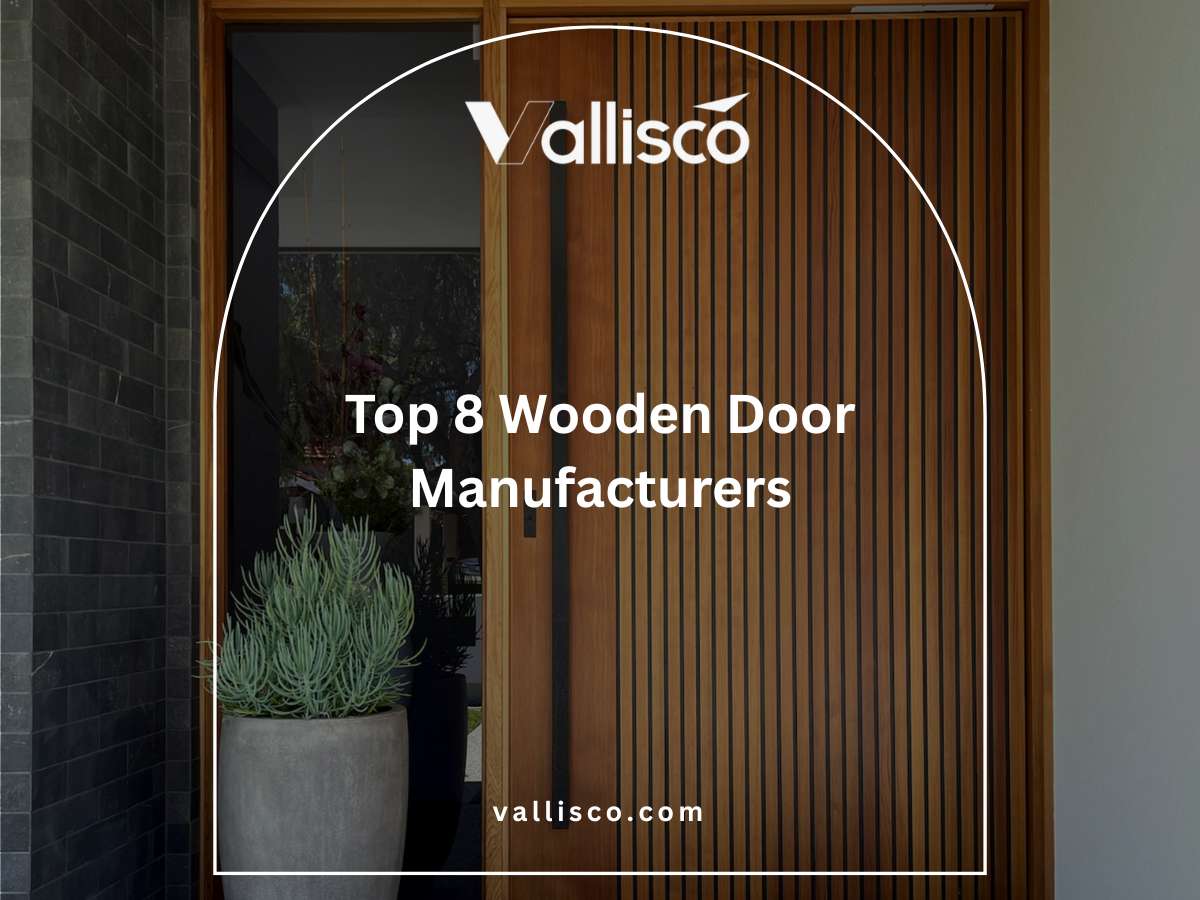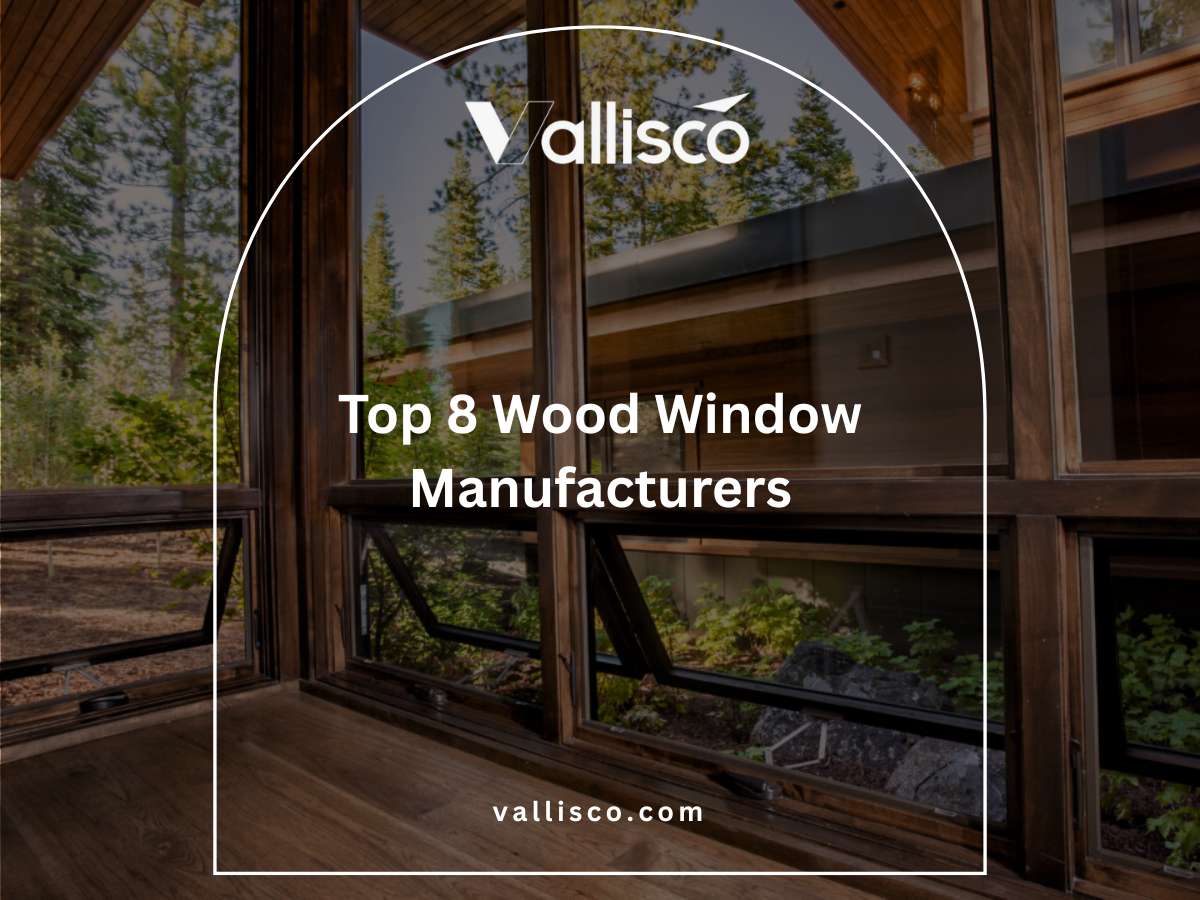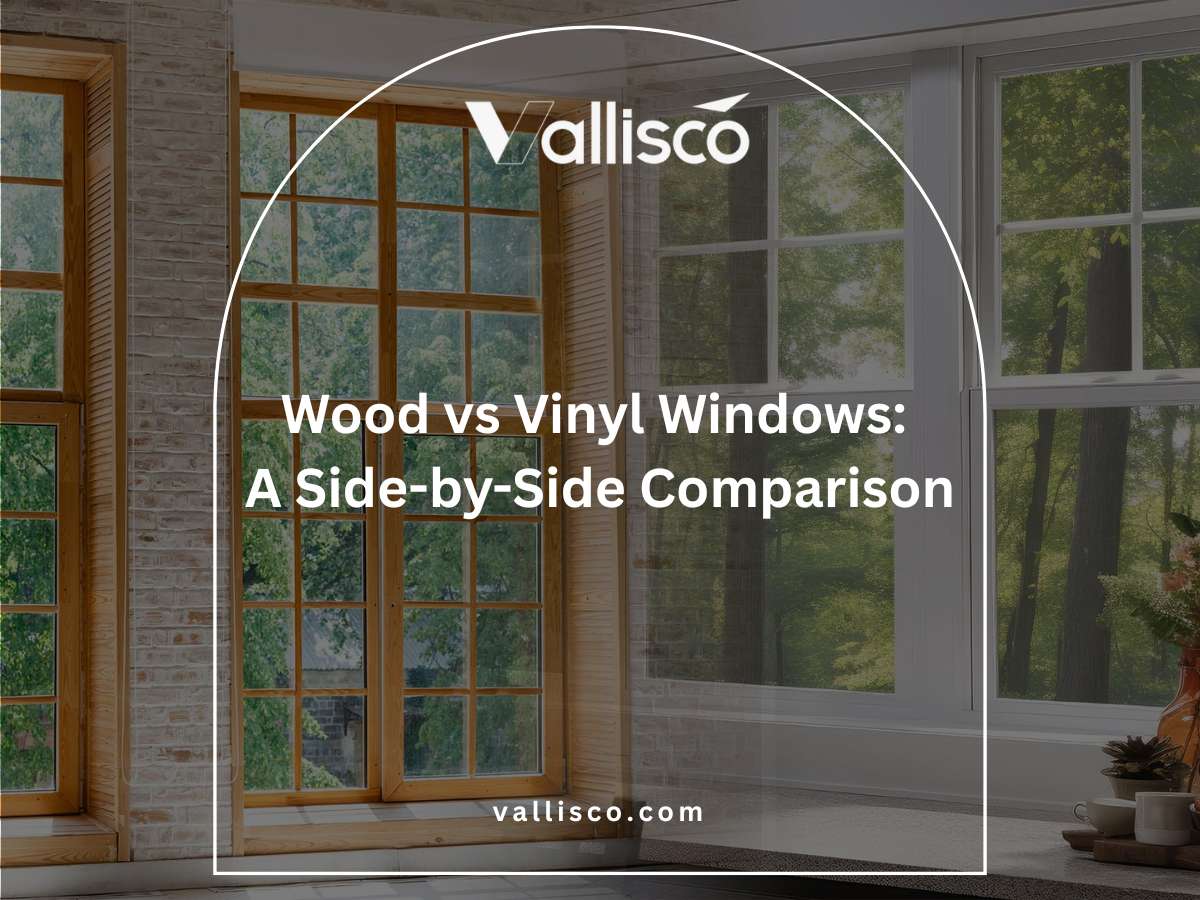A few years ago, I helped a client replace three storm-damaged doors on their warehouse. The kicker? They had just installed them the year before.
The problem wasn’t the install. It was the door choice.
That experience pushed me to figure out what actually makes a commercial storm door worth buying.
Since then, I’ve worked on dozens of storm door projects for all kinds of commercial properties. This article is built on those lessons. What lasts, what breaks, and what’s worth your budget.
We’ll walk through storm door types, strength ratings, frame materials, and how to match the right door to your building’s needs. You’ll walk away knowing exactly what to get, and why.
Storms don’t wait. A bad door can cost you way more than just repairs.
Let’s dive in!
1. What Is a Commercial Storm Door?
A commercial storm door is a heavy-duty exterior door designed to protect your building’s main entry doors from harsh weather like wind, rain, and snow. It acts as a barrier, helping keep the inside safe and dry while adding an extra layer of insulation and security.
Unlike regular doors, commercial storm doors are built tougher. They’re made from strong materials like steel or aluminum, and often include features like reinforced glass, tight weather seals, and heavy-duty hinges. If your business entrance sees a lot of traffic or faces rough weather often, this type of door is a smart investment.
Here’s a real-world step-by-step demonstration of installing this kind of door—watch how a full-view storm door with a retractable screen goes up:
2. Types of Commercial Storm Doors
Commercial storm doors come in several types, each built for specific environments and usage needs. Choosing the right one depends on where it’s going, how much traffic it sees, and what kind of weather it’s up against. Here’s a simple breakdown to help you compare your options:
| Type | Material | Best For | Weather Resistance | Traffic Level | Notable Feature |
| Full-View Storm Door | Aluminum + Glass | Retail stores, showrooms | Moderate to High | Medium to High | Clear visibility and light entry |
| Security Storm Door | Steel or Iron | Warehouses, back entrances | High | Medium | Built-in security grille or mesh |
| Louvered Storm Door | Aluminum or Steel | Utility rooms, mechanical spaces | Moderate | Low | Allows airflow while keeping out rain |
| Flush Panel Storm Door | Solid Steel or Fiberglass | Offices, storage units | High | Medium | Fully solid panel, no window |
| Insulated Storm Door | Steel + Foam Core | Cold climates, food facilities | Very High | Medium to High | Thermal barrier for energy efficiency |
| Custom Heavy-Duty Door | Varies | High-risk zones, industrial buildings | Extreme | Very High | Built to spec for weather and usage |
3. Key Features to Consider When Buying
When it comes to storm doors, the little details make a big difference. The right features can mean the difference between a door that lasts for years and one that needs replacing after the first big storm. Let’s break down the key things you’ll want to keep in mind before you buy.
Material Strength and Durability
Storm doors take a beating from wind, rain, and daily use. That’s why choosing the right material like steel, aluminum, or fiberglass is so important. Steel offers top strength but can be heavy. Aluminum is lighter and resists rust. Fiberglass falls somewhere in the middle and resists dents pretty well. Make sure the frame and panels can handle your climate and traffic level without wearing out too quickly.
Glass Type and Visibility Options
If your door includes glass, check what kind it is. Tempered or laminated glass is safer and stronger, making it a good pick for high-traffic or high-risk areas. Full-view doors offer lots of visibility and light, which is great for showrooms or entryways. If privacy matters more, you can choose tinted, frosted, or reinforced mesh glass. The goal is to balance safety, appearance, and how much light you want inside.
Weather Sealing and Insulation
A good storm door should keep the outside where it belongs. Look for doors with tight weather stripping, compression seals, and insulated cores. These features help block out wind, water, and extreme temps, which can protect both your building and your energy bill. If your business is in a cold or storm-prone area, this is essential. The better the seal, the longer your main door and interior will last.
Hardware Quality and Security
Don’t overlook the handles, locks, and hinges. These are the parts that get used the most. Commercial-grade hardware should be rust-resistant, heavy-duty, and secure. Vallisco’s commercial storm doors even come with multi-point locking systems or reinforced hinges for added strength. If your door leads to a restricted area or stores valuable goods, stronger hardware is a must.
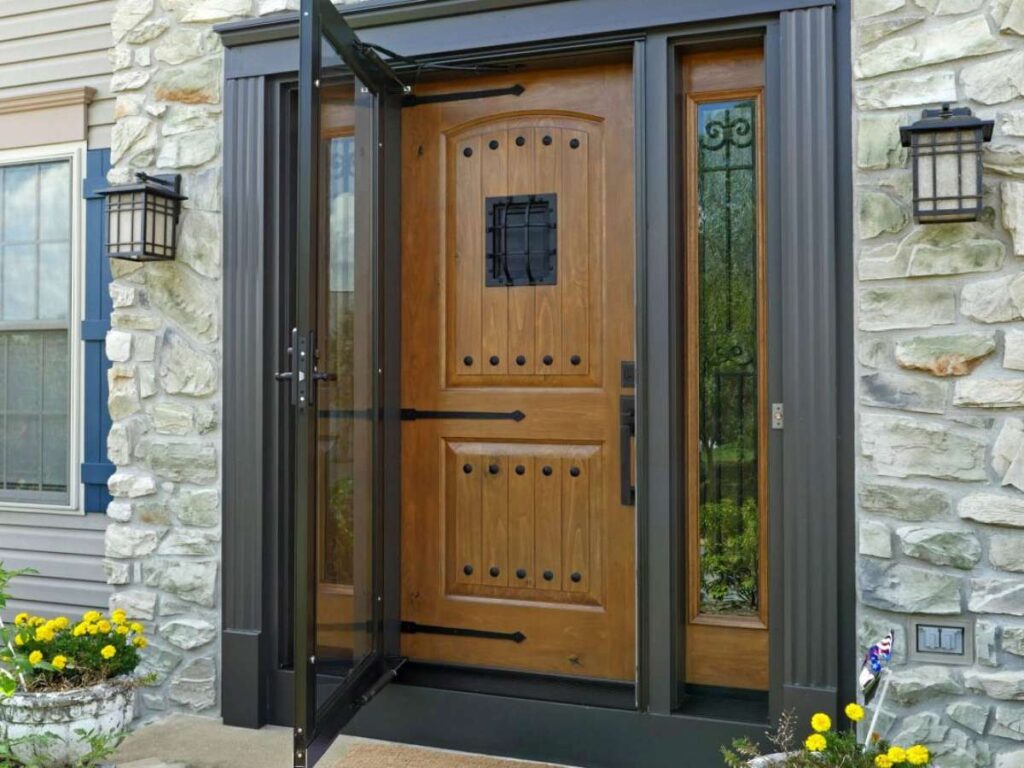
4. Measuring and Sizing for a Proper Fit
Getting the right size for your commercial storm door isn’t complicated, but it does take a bit of care. A well-fitted door helps seal out weather, improves security, and avoids costly rework. Here’s what to focus on when measuring:
- Measure Width in Three Spots: Use a tape measure to check the width of the doorway at the top, middle, and bottom. Walls and frames aren’t always perfectly straight, so go with the smallest of the three measurements to ensure a snug, accurate fit.
- Check Height on Both Sides: Measure from the threshold up to the top of the frame on both the left and right sides. Sometimes there’s a slight slope or shift in the frame, and measuring both sides will help you catch any differences.
- Know Your Frame Depth: Storm doors need a certain frame or jamb depth to mount properly, especially if they come with closers or insulation. Take note of the depth from the inside to the outside edge of the frame so your door doesn’t end up sitting awkwardly or sticking out.
- Allow Space for Hardware: Don’t forget about the space needed for hinges, closers, and locks. If the fit is too tight or misaligned, even the best hardware can wear out faster or cause the door to jam during use.
- Measure Twice Before Ordering: A second round of measuring only takes a few minutes but can save you a lot of frustration later. If you’re unsure about your numbers or your opening has quirks, bring the details to your supplier—they’ve likely seen it all and can help you pick the right fit.
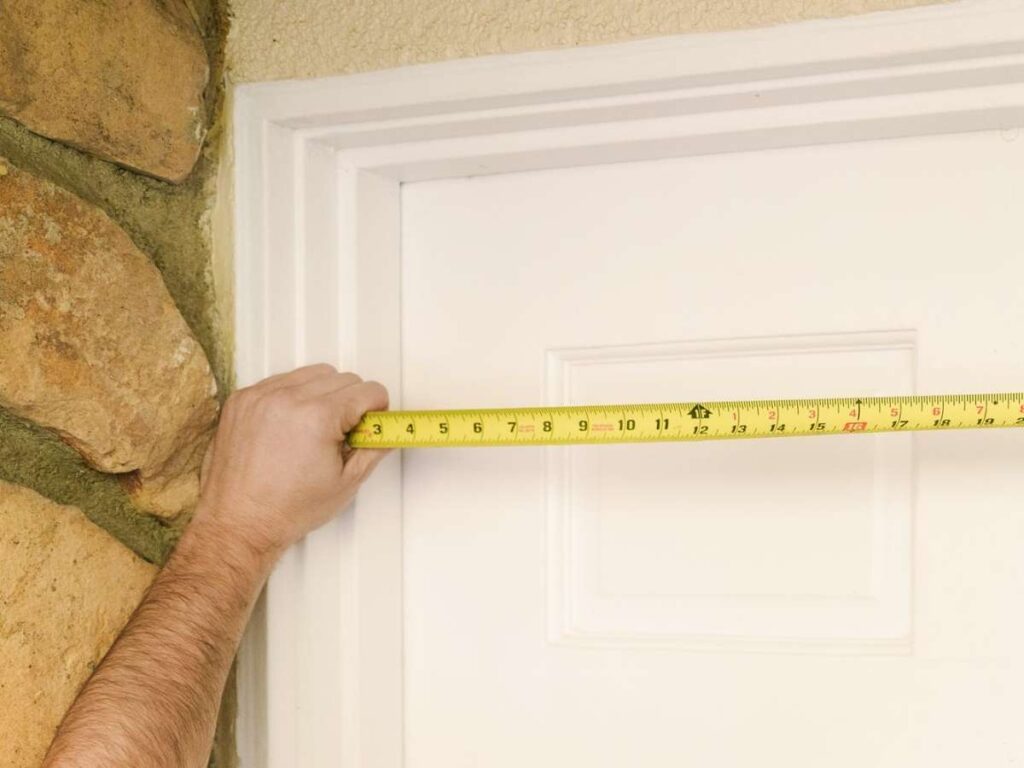
5. Energy Efficiency and Insulation Ratings
Energy efficiency isn’t just a buzzword, it’s money saved and comfort gained. The right storm door can help keep your indoor climate steady while taking pressure off your heating and cooling systems. Here’s what to look for if you want a door that works as hard on your energy bill as it does against the weather.
Insulated Cores Add Real Value
Vallisco’s commercial storm doors come with foam-filled or multi-layered cores built into the panel. These materials slow down how quickly heat or cold passes through the door. This helps reduce strain on your HVAC system, especially in areas with big temperature swings. For office buildings, warehouses, or retail spaces, insulation can make your space more comfortable and cut monthly energy costs.
Check the R-Value and U-Factor
These two ratings help you understand how well a door performs thermally. R-value tells you how much insulation the door provides, and a higher number means better protection. U-factor measures how easily heat flows through the door or glass, and in this case, lower numbers are better.
Doors with glass should show the U-factor for the glass itself, since that’s where energy loss often happens. These numbers make it easier to compare doors and make a smarter purchase.
Quality Seals and Weatherstripping Matter
Even the most insulated door will fall short if air leaks around the edges. That’s why seals, sweeps, and weatherstripping are just as important as the door core. These parts keep out drafts, dust, and moisture, helping you get full value from the door’s energy-saving features. Make sure the seals are tight, flexible, and built to hold up over time.
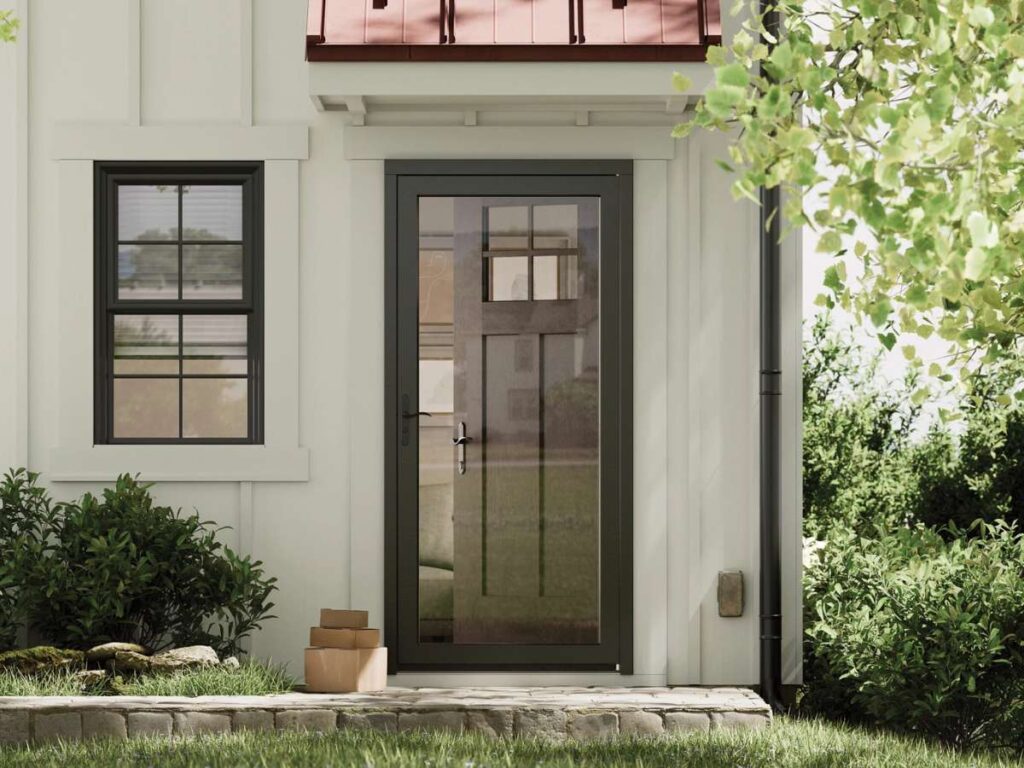
6. Common Mistakes to Avoid
Even with the best intentions, it’s easy to make a few missteps when buying a commercial storm door. These mistakes can lead to wasted money, poor performance, or even safety issues down the road. Here’s a quick table to help you spot the most common errors and steer clear of them before they cost you.
| Mistake | Why It Happens | How to Avoid It | Impact on Business |
| Wrong Size Measurement | Only measured in one spot | Measure in multiple areas | Poor fit, drafts, installation delays |
| Choosing the Cheapest Option | Focused on upfront savings | Prioritize long-term durability | More repairs, early replacement |
| Ignoring Local Weather Needs | Assumes all doors are the same | Match specs to your climate | Water damage, energy loss |
| Overlooking Hardware Quality | Hardware not reviewed closely | Choose commercial-grade parts | Malfunctions, security risks |
| Skipping Professional Advice | Tries to DIY or guess | Consult a supplier or installer | Wrong door type, extra costs |
7. Maintenance Tips for Longevity
Storm doors in commercial settings take a lot of abuse from weather, traffic, and equipment. Keeping them in good shape isn’t just about appearance. It protects your investment and helps avoid unplanned downtime or costly repairs. Below are four practical tips to help extend the life of your storm doors.
Schedule Routine Cleaning and Visual Checks
Set a regular schedule to clean door surfaces and inspect for damage. Dust, grease, and moisture can collect around the hinges, closer arms, and threshold, especially in high-traffic or industrial environments. Cleaning with a mild solution and doing a quick inspection every quarter helps spot early signs of wear before they turn into bigger issues. Make it part of your facility’s routine maintenance checklist.
Lubricate All Moving Components
Hinges, closers, and locksets should be lubricated at least twice a year, or more often in high-use areas. Lack of lubrication leads to friction, which wears down parts and causes doors to stick or slam. Use a commercial-grade silicone or light machine oil to maintain smooth operation. Be sure to wipe off excess lubricant to avoid dirt buildup.
Inspect Seals, Gaskets, and Fasteners
Weatherstripping and perimeter seals should be checked during seasonal changeovers or after heavy storms. Look for signs of cracking, compression loss, or detachment. Also tighten any loose screws or brackets on hinges and frames. Maintaining these components ensures the door seals properly and keeps energy efficiency high.
Keep Floor Area and Threshold Clear
Debris buildup around the base of the door, such as pallets, ice melt, or leaves, can affect how the door closes and drains. Make it standard practice for janitorial or warehouse teams to clear the area during routine cleaning. This small step reduces wear on the threshold, prevents drainage issues, and helps avoid tripping hazards at entry points.
Conclusion
That same client now has storm doors that have held up through three brutal seasons. No leaks. No damage. Just reliable performance.
This guide gave you the facts you need: door types, sizing, insulation, and maintenance, all in one place.
Because choosing the right commercial storm door doesn’t have to be a headache. The key is knowing what to look for before you buy.
Ready to upgrade your storm protection with expert help? Contact Vallisco today, your trusted partner in doors and windows built to last.
Learn More: Recommended Reads
Want to see more products? We’ve got plenty of options that might just be the perfect fit for you:
Still haven’t found what you’re looking for? Don’t hesitate to contact us. We’re available around the clock to assist you.


